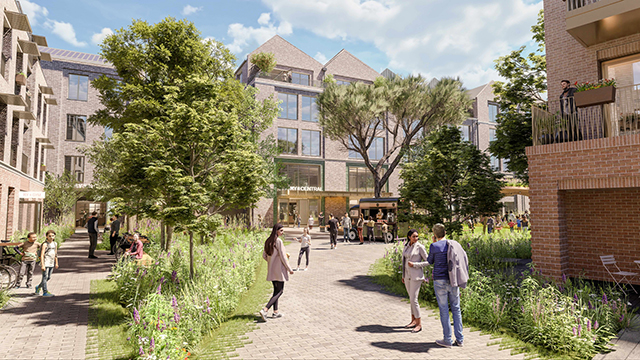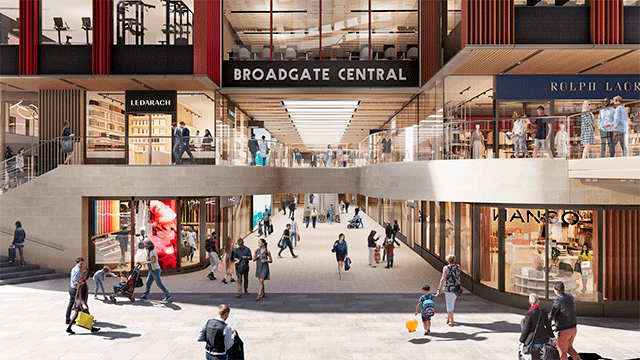In our previous instalment, the developer had to secure land assembly (step 1) and secure a commitment from an occupier (step 2). Now we look at funding and the steps needed for the developer to conclude the project and realise a return.
Step 3 – Sourcing funding
A developer tends to take a lot of project and cost risk in expectation of a high return at some point in the future. The timing to this return can sometimes take several months, or even years to realise.
By contrast, an institutional funder tends to be very risk averse and looks to secure long-term, income-producing assets that are “stable”. So the ideal world funder for the project would usually tend to be the likes of a pension fund or institutional investor with a medium to long-term outlook.
The objectives and role of the funder – if the occupier has a strong covenant, then the developer might find itself in the fortunate position where multiple funders are interested in the project. In that scenario, a developer could engineer a bid situation to select its preferred funder based on favourable terms and availability of capital. The “prize” for the funder will be the long-term stable income that it can collect over the life of a 10, 15 or 20-year lease.
The role of a funder therefore is to inject capital into the project so that it can avail of the stable income stream in future years. The funder therefore wants to “own” the right to receive the rental income from the occupier.
The deal as between developer and the fund – now is also the time where the developer can look for its own return or “reward” for putting the project together. Typically, the parties might land on the following arrangement:
- The funder agrees to acquire the land instead of the developer under the land contract (so the funder pays the land price);
- Usually the funder would also refund any development costs incurred to date (including any fees for the planning application);
- The funder would commit to funding the construction costs;
- The funder will also agree to a reward or “bullet” payment to the developer on successful completion of the project, which would usually be an agreed percentage of the overall costs of delivering the project – typically anything between 12%-15%, but potentially more depending on the risk profile;
- The amount of the bullet payment may be subject to deductions too by underperformance or late delivery by the developer. There may also be a regular payment, monthly or quarterly, by way of profit to the developer and to fund cashflow; and
- The funder would also agree to pay the professional fees incurred and the costs of the contractor as and when they fall due. These payments are managed by the developer once collected from the funder.
All of these obligations would sit in a development funding agreement (DFA) which is entered into between the funder and the developer. Another piece of the puzzle has been solved at this point.
How does the funder acquire the land and what is the benefit of forward funding? At this point, a prudent developer would have structured the land contract to allow for the transfer of the land interest direct to a fund. Remember that the developer’s commercial objective is to realise a profit payment from successful execution of the project, but the developer may not necessarily wish to “hold” land as such as that would give rise to further liabilities.
Required outcome/next steps – this is a particularly sweet spot for any funding deal – once planning consent has been granted and any other conditions under the land agreement are satisfied, the landowner will expect to dispose of its land interest in return for payment of the land price. With careful drafting and the right legal structure the following sequence can be achieved:
- On the completion date the funder steps into the shoes of the developer under the land contract. The funder pays the land price to the landowner and becomes the “buyer”;
- The funder is then the new owner of the land interest which will underpin the project. The landowner has collected its capital receipt and drops out of the picture. The developer is no longer bound by the liabilities of the land contract;
- The funder is required to pay stamp duty land tax on the purchase of the land. The price paid is for “bare” land without any buildings. Ergo, the funder only pays SDLT on the lower value assuming an “undeveloped” site;
- Through overlapping conditional contracts, however, the funder has basically acquired the right to have a logistics facility constructed on its land with an occupier waiting in the wings to pay rent. So, assuming all goes according to plan the funder will eventually “own” a new logistics facility which will be worth a lot more. It has therefore “entered” the project at the lowest land value but will fund the developer so that maximum value is then created over time;
- Remember the developer would have committed to build the logistics facility for the occupier under the agreement for lease. So once the funder acquires the land the parties waste no time and the developer will need to start construction activity to comply with the AFL; and
- By acquiring the land the funder will then be entitled to become the landlord of the occupier in due course.
Step 4 – Contractor mobilisation and construction begins
The developer will mobilise the appointed building contractor and progress the various appointments of the professional team as soon as it can following completion of the land sale to the funder.
The developer would usually appoint its preferred contractor after a mini-tender exercise or via some sort of preferred panel appointment. A well-advised funder would inevitably require some sort of process for selection of the contractor too, just to ensure that the relevant contract price is in line with market trends. Ultimately it will be the funder that is underwriting the construction costs.
Under the DFA, the developer would be expected to provide regular updates to the funder as to progress with construction.
The AFL will impose similar obligations so that the occupier can also have an appropriate level of visibility.
Required outcome – completion of the construction of the new logistics facility in line with the requirements of the planning permission in accordance with pre-agreed timescales and on budget.
Step 5 – Lease completion
Completion of the construction works is usually “certified” by an independent monitor.
Traditionally, this is a role fulfilled by either an employer’s agent or project manager. The PM will inspect the proposed completed construction work. If the PM is satisfied that the relevant works have been completed in accordance with the agreed specification then it will officially acknowledge that completion has occurred and the issue of a formal certificate of practical completion (PC certificate).
Issue of the PC is the trigger for the final piece of the puzzle. It unlocks the final sequence of events in the life cycle of the project:
- The occupier is now required to enter into the lease under the AFL. The logistics facility is now “occupied” and the occupier can trade/conduct operations from the facility and access a new geographical market;
- The funder now has the benefit of the rental income stream under the lease. It has thus achieved its commercial objective; and
- Assuming that the developer has procured completion of the project on time and on budget then it will be entitled to its reward payment under the DFA.
In summary, if the series of overlapping conditional contracts are correctly sequenced then each participant ultimately gets what they want.
Roy Barry is a partner at Brabners








